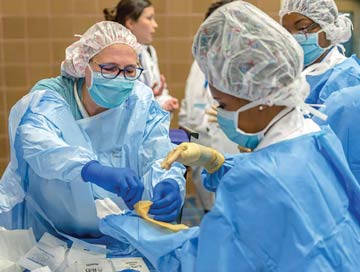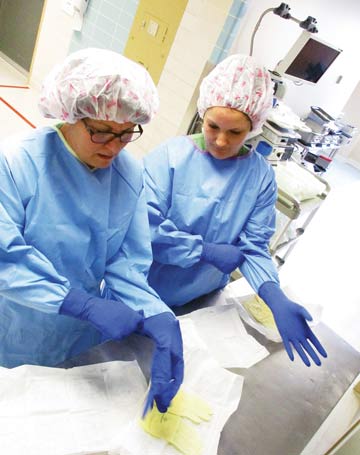Educating staff about the effectiveness of double-gloving was important on several fronts, according to Rachel Nolan, RN, BSN, CNOR, Bassett's perioperative quality and safety nurse. The facility's leadership had significant concerns about
occupational safety hazards from needlesticks and other sharps injuries, as well as seroconversion after blood contamination. Obviously, the potential for patients becoming exposed to infectious fluids through glove punctures was also
worrisome.
"Provide plenty of details about why double-gloving is considered an evidence-based best practice in surgical settings," says Ms. Nolan, noting that the practice is endorsed by the CDC, the World Health Organization, the American College of
Surgeons, AORN, OSHA, the American Academy of Orthopedic Surgeons and the International Safety Center.
Ms. Nolan says the staff was told the volume of blood on a suture needle is reduced by as much as 95% when it passes through two glove layers, thereby reducing viral load in the event of a contaminated percutaneous injury. The risk of exposure
to a patient's blood is reduced by 87% when the outer glove is punctured if an indicator underglove is used. The reason: Colored undergloves make tiny perforations to outer gloves easier to notice, often at the time of the incident, so
staff can quickly don a fully intact pair.
"Some staff members thought using a single, thicker orthopedic glove offered more protection than the dual layers of two thinner gloves," says Ms. Nolan. "And many of those who were double-gloving used two outer gloves, which is a costlier
solution than donning gloves designed for double-gloving and doesn't take advantage of the bi-color puncture indication system, a key safety feature. Ultimately, you need to convey the importance of double-gloving, and make sure your team
does it correctly."
.svg?sfvrsn=be606e78_3)


.svg?sfvrsn=56b2f850_5)